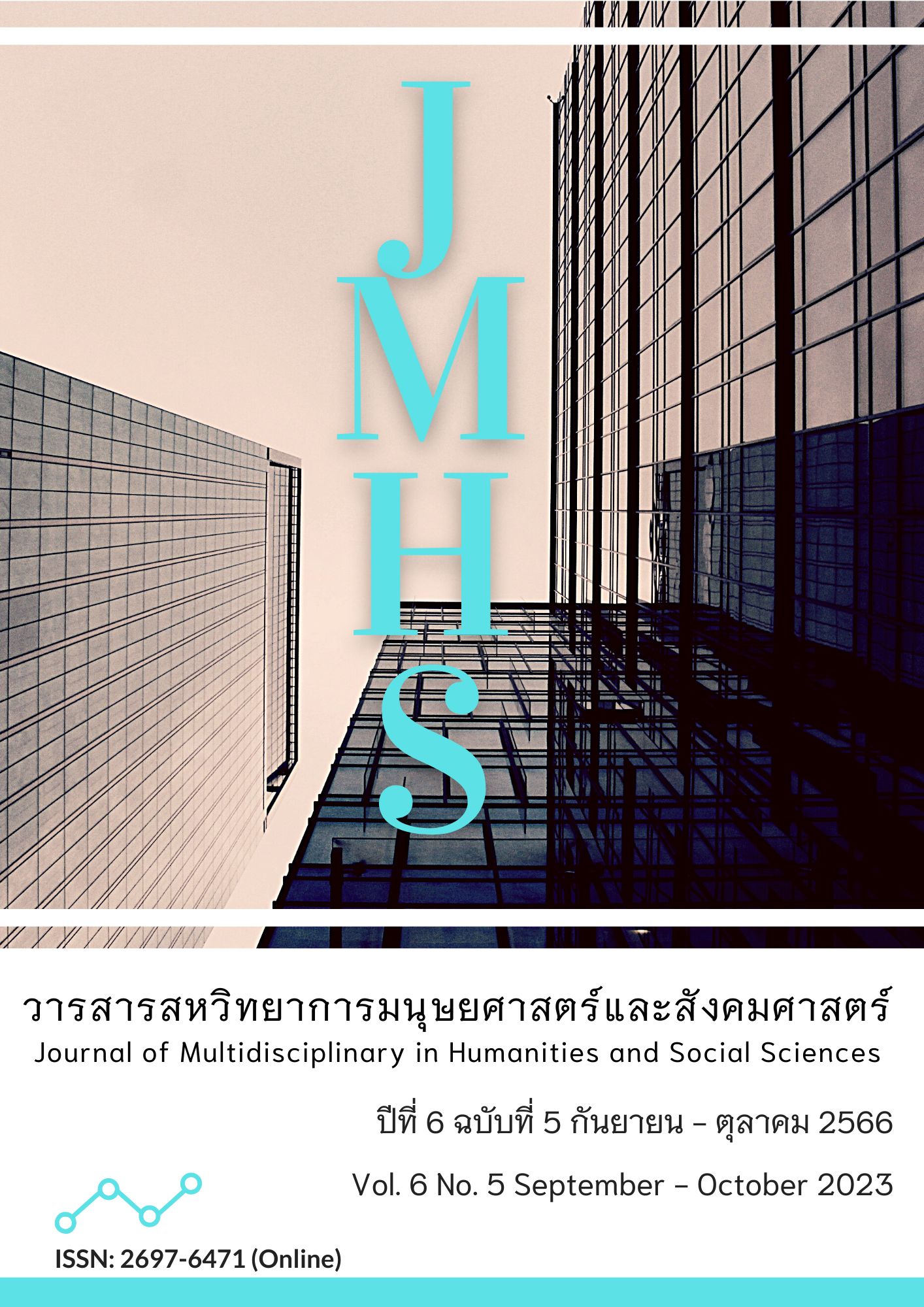The Resolving Conflicts in Chinese Literature ‘Song Kang’
Main Article Content
Abstract
The purpose of this article was to study the resolution of conflicts appearing in the Chinese literature on Song Kang. Somdet Chao Phraya Boromaha Sri Suriyawong Edition This study was qualitative research using the concept of the Thomas-Kilmann Conflict Mode Measuring Instrument as a research framework. A total of 98 research samples. The results of the research revealed that 1) there were 6 types of knot relief, namely assertiveness (18.37%), competitive bargaining (44.90%), cooperative bargaining (2.04%), compromise bargaining (11.22%), dodgy bargaining (14.29%), and facilitating negotiations (9.18%), respectively. It showed that the character chooses a match. Use the force of decision-making to solve the most problems. Followed by evading when there is still no way to win or is not ready to fight, and may choose to negotiate to reduce conflicts or compromise to reduce unnecessary losses.
Article Details

This work is licensed under a Creative Commons Attribution-NonCommercial-NoDerivatives 4.0 International License.
Views and opinions appearing in the Journal it is the responsibility of the author of the article, and does not constitute the view and responsibility of the editorial team.
References
จันทร์สุดา ไชยประเสริฐ. (2549). ความขัดแย้งในวรรณคดีไทยสมัยรัตนโกสินทร์ตอนต้น (รัชกาลที่ 1 - 3) : การเผชิญปัญหาและการแก้ปัญหาของตัวละคร(วิทยานิพนธ์ปริญญาอักษรศาสตรมหาบัณฑิต สาขาวิชาภาษาไทย). มหาวิทยาลัยศิลปากร.
ชิดหทัย ปุยะติ. (2554). พัฒนาการและลักษณะเด่นของวรรณกรรมจีนโพ้นทะเลในประเทศไทย. วารสารศิลปศาสตร์ มหาวิทยาลัยอุบลราชธานี, 7(2), 71-91.
บรมมหาศรีสุริยวงศ์, สมเด็จเจ้าพระยา. (2561). ซ้องกั๋ง. กรุงเทพฯ: มหาวิทยาลัยราชภัฏบ้านสมเด็จเจ้าพระยา.
บุรินทร์ ศรีสมถวิล. (2557). การศึกษาเปรียบเทียบการแปลสำนวนในเฟิงเสินเหยี่ยนอี้กับห้องสิน ฉบับพากย์ไทย สมัยรัชกาลที่สอง และสำนวนแปลของวิวัฒน์ ประชาเรืองวิทย์. กองส่งเสริมการวิจัย ฝ่ายวิจัย มหาวิทยาลัยหอการค้าไทย.
ปวีณ์ธิดา ยิ้มแย้ม, ประภัสสรา ห่อทอง และจิราพร ภูวรัตนาวิวิธ. (2564). ความขัดแย้งของตัวละครที่ปรากฏในวรรณกรรมเรื่อง ถ้าวันหนึ่งนั้น...ฉันตาย. ใน รายงานสืบเนื่องจากการประชุมวิชาการระดับชาติ สำหรับนักศึกษา มหาวิทยาลัยราชภัฏกำแพงเพชร ครั้งที่ 1 (น. 283-295.)
พิสมัย ประเสริฐศรี, จิตฎามาศ ติยวรพันธุ์, ปรียานุช หลำดีน และ จอมขวัญ สุทธินนท์. (2561). ความขัดแย้งของตัวละคร “เมขลา” ในนวนิยายเรื่องแม่เบี้ย. วารสารสหวิทยาการสังคมศาสตร์และการสื่อสาร, 1(2-3), 144-157.
ภัทริยา วิริยะศิริวัฒนะ. 2558. การวิเคราะห์การเล่าเรื่องในภาพยนตร์เรื่อง Les Miserables(วิทยานิพนธ์ปริญญาศิลปศาสตรมหาบัณฑิต สาขานิเทศศาสตร์และนวัตกรรม). สถาบันบัณฑิตพัฒนบริหารศาสตร์.
รัตติกา กรรณิกา. (2559). ความขัดแย้งของตัวละครในวรรณกรรมซีไรต์(วิทยานิพนธ์ปริญญาศิลปศาสตรมหาบัณฑิต สาขาวิชาภาษาไทย). มหาวิทยาลัยราชภัฏเชียงใหม่.
He Xiao hua และ พัชลินจ์ จีนนุ่น. (2564). สถานภาพการวิจัยวรรณกรรมจีนในผลงานวิชาการในรอบทศวรรษ (พ.ศ. 2553-2563). ใน การประชุมหาดใหญ่วิชาการระดับชาติและนานาชาติ ครั้งที่ 12 (น.706-718).
Newstrom, J. W. (2015). Organizational Behavior: Human Behavior at Work. (14th ed). New York: McGraw-Hill.
Kilmann, R. H. (n.d.). TAKE THE THOMAS-KILMANN CONFLICT MODE INSTRUMENT (TKI). Retrieved August 30, 2021, from https://kilmanndiagnostics.com/overview-thomas-kilmann-conflict-mode-instrument-tki/
Yao Siqi. (2560). อุปลักษณ์เชิงมโนทัศน์ “มนุษย์เป็นสัตว์”: กรณีศึกษาสมญานามในวรรณกรรมจีน เรื่อง 水浒传 /ʂʰuei214 xu214 tʂuan51/ (ซ้องกั๋ง) (Conceptual metaphor "HUMAN BEINGS ARE ANIMALS": A case study of nicknames in Chinese literature of “Water Margin”). วารสารอักษรศาสตร์ จุฬาลงกรณ์มหาวิทยาลัย, 46(2), 1-43. https://so03.tci-thaijo.org/index.php/jletters/article/view/110547


